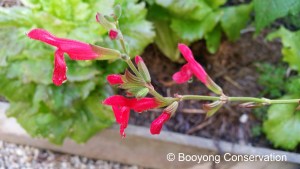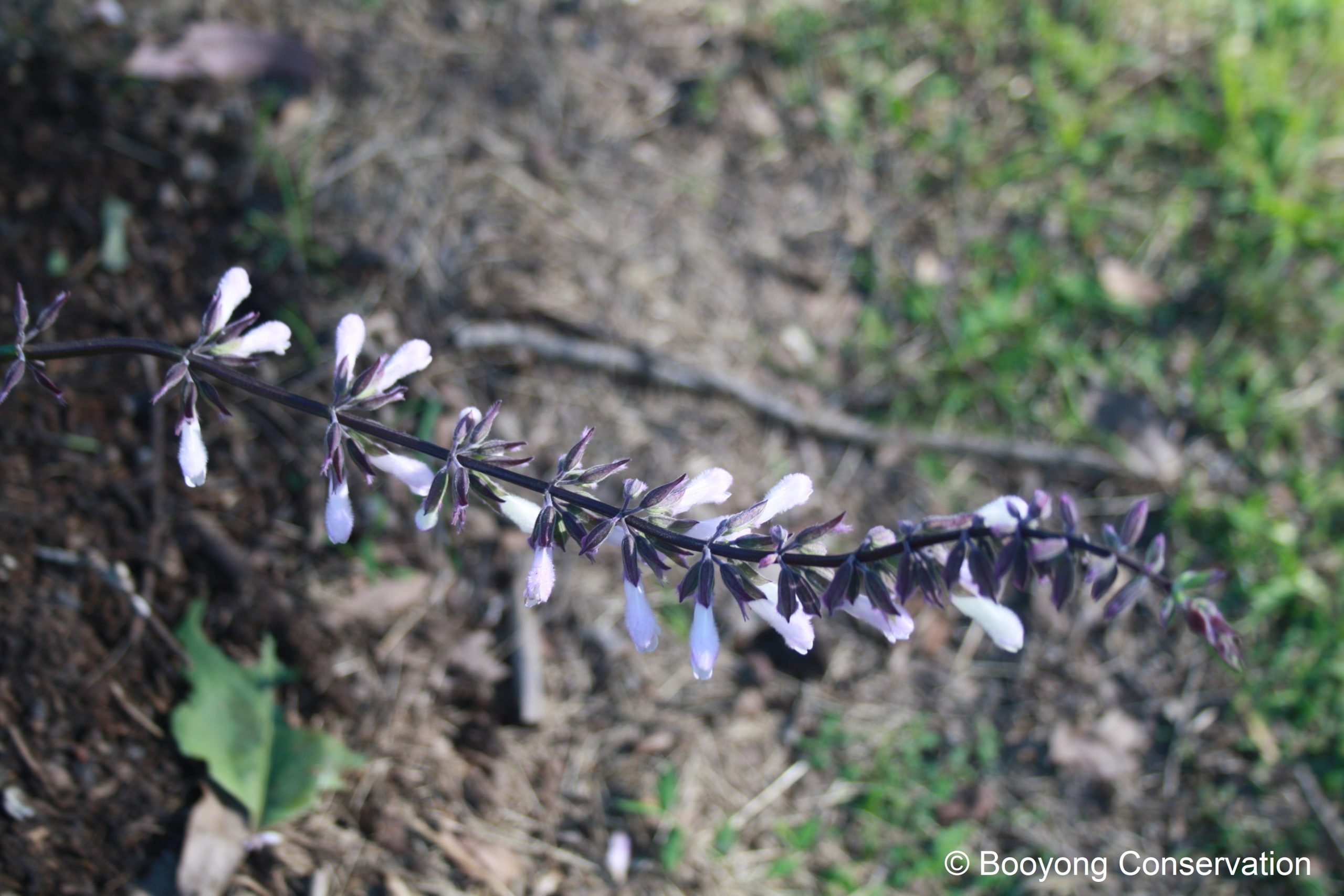Thanks to our crop swapping friend Cecilia, we’ve started collecting Salvia’s for the food forest at Booyong. Cecilia generously gifted us some cuttings last year and they have grown beautifully in the dry conditions over the recent Summer. There are so many beautiful coloured varieties to explore, they love the sun, are easy to propagate and are drought resistant. A bonus and reason we are so fond of Salvias at Booyong is the fact that the birds and bees love them and once they’re established the kangaroos and wallabies leave them alone.
Salvia is the largest genus in the mint (Lamiaceae) family and according to … there are over 900 species of Salvia’s, with over 500 being edible. Depending on the variety, they can be classified as annuals, biennials, perennials and herbaceous shrubs.
In the video on this post, the Eastern Spinebill is using it’s long, curved beak to get nectar from this unidentified Salvia’s flowers.
Salvia’s currently in the Booyong Food Forest Include:
Salvia Hot lips – Hot pink and White
Salvia Waverly – Purple and White
Salvia – Purple and Blue flowers (yet to be identified) Salvia – Summer Jewel – Soft pink and White
Salvia – Red (yet to be identified) Salvia Leucantha – Pink Velvet
Salvia flowers come in a wide range of colours and we will introduce the ones we have acquired at Booyong in some more detail to you over the coming weeks. Please feel free to take a cutting when you come to stay, we are very happy to share these beautiful flowers.

Growing – Most Salvia’s flower from Spring to Autumn and they can grow as high as 3m, or be a small shrub depending on the species.
Care – Salvias like to be placed in a well-drained soil in the sun and don’t mind being fertilised on occasion. We can attest to the fact that they are drought tolerant and have kept them well mulched during the dry season to protect their roots.

Pruning – Annual and perennial varieties can be pruned after flowering and the larger shrubby types can be cut to approximately 45cm from the ground in late autumn. They are extremely hardy and come back after a vigorous pruning.
Companion Planting – Salvia’s make great companion plants because of their hardiness and because they attract bees, butterflies and other pollinators to your garden. Due to the many varieties available you can choose your desired species based on the plant required.
Pests and Diseases – Salvia’s are vulnerable to be affected by common garden pests such as aphids, caterpillars, snails, white-fly and spider mites.
 Harvest – Edible Salvia’s can be harvested at almost any time, but you’ll get the strongest flavour when you pick leaves before the plant flowers.
Harvest – Edible Salvia’s can be harvested at almost any time, but you’ll get the strongest flavour when you pick leaves before the plant flowers.
Healing properties – Salvia comes from the Latin salvare, a reference to the plant’s ability to heal. Ancient herbalists in the past used various species of sage to cure anything from snake bites to epilepsy.
Propagation – Salvias can be propagated by sowing seeds (for annual types in Spring) or by cuttings (for biennial,  perennial and herbaceous types).
perennial and herbaceous types).
Eating – Common garden sages and team up well with parsley, rosemary and thyme when made into meat stuffing. They are also a lovely addition to salads, soups and can make a lovely tea. Children are also known to love sucking the nectar out of the little flower tubes as it’s sweet to taste! We will explore this further when we post on this variety of edible sage.
